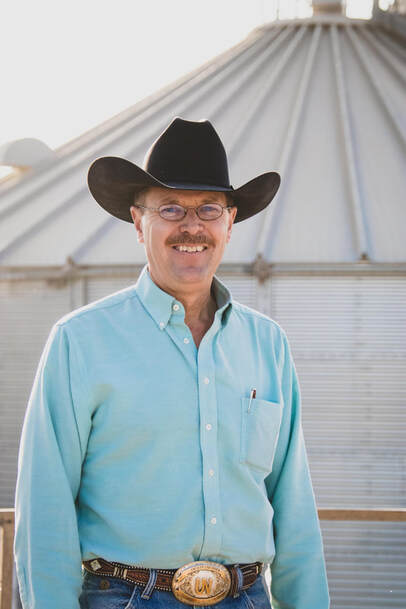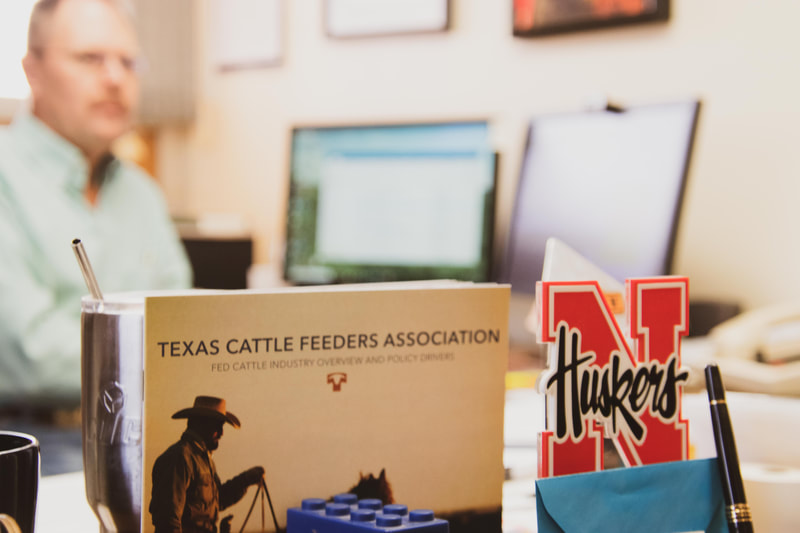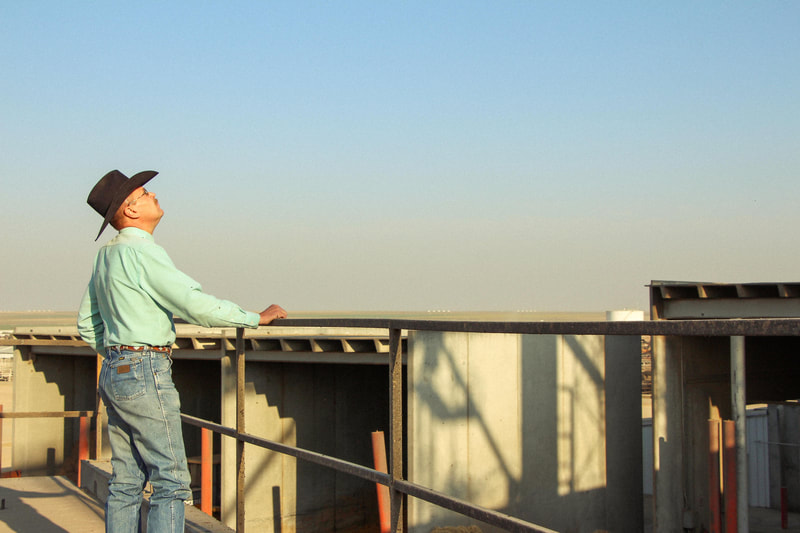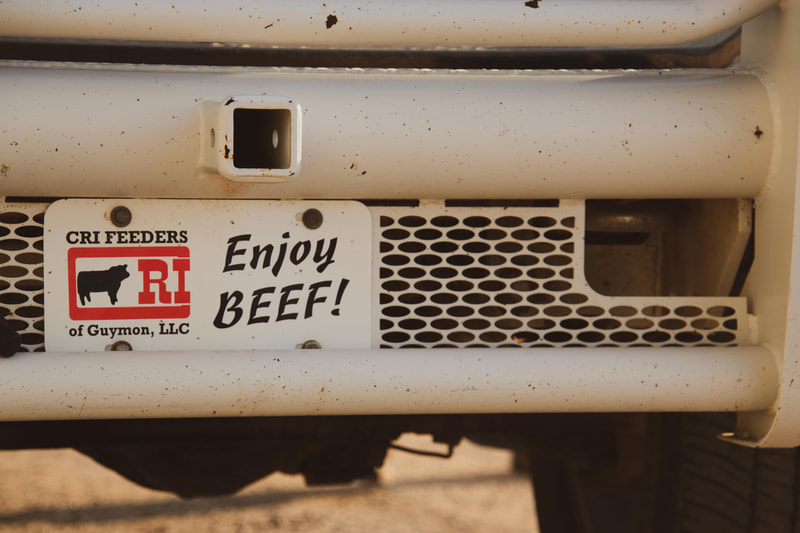TCFA News
Scott Anderson, the 2021 TCFA Chairman, has always been up for a challenge. In 1989, when Anderson was invited to take part in management of CRI Feeders in Guymon, Okla., the company was running, but needed a lot of work.
“We were trying to rebuild the place and do all kinds of things,” he said. “We would spend some 15-, 16-hour days, be totally worn out, but ready to come back the next day and work through the challenges.” The challenges were difficult but rewarding. Today, CRI Feeders is a successful performance-oriented, customer-cattle focused feedyard. The goal is to provide an unmatched level of care and service for their customer’s livestock and do so by respecting customers and employees with integrity. Anderson’s love for the industry is attributed, not only to the challenges it poses, but also to the people who work alongside him, both inside and outside the feedyard. “The people are one of the best things about this industry,” he said. “There’s a cooperativeness that parallels the competitiveness between different feedyards. That is fun and challenging.” Anderson grew up in Blair, Neb. His family owned a diversified livestock and grain farm. He showed his first bred heifer in 1973 through his county 4-H program and continued to show both cattle and pigs every year until graduation. “The sows graduated from the farm at the same time I did,” he laughed. Anderson later attended the University of Nebraska where he earned a bachelor’s degree in animal science and a master’s in ruminant nutrition. In the summer of 1986, he left Nebraska and moved to Kansas to work at the K-State research feedlot. After a year as a sales nutritionist, he was offered the job of assistant manager at CRI. Ten years later, Anderson left the yard to work for a technology company that focused on feedyard cattle, but it wasn’t long before another Guymon area feedyard approached him to take over the manager job. In 2004, CRI wanted Anderson back, and he has been there ever since. The industry has evolved since then and will certainly evolve again, a challenge that is not lost on Anderson. “At one time we thought we were a mature industry, but it just continues to evolve,” he said. “For instance, we looked back at old showlists from the late 80s and early 90s. Back then we’d trade cattle two or three times during the week, and there would be a $2 to $4-$5 range in what those cattle brought. Each week all the packers came out and it was competitive. However, the emphasis then was to get them good enough to sell and roll them as we quick as we could.” By the end of the 90s, that had shifted, he noted, but there were reasons for that. Early on the industry focused on domestic demand and a shift to higher-quality, griddable cattle followed. “Today, it is a global market and we must look at so many factors, like how the U.S. dollar is trading and what is happening around the world,” he said. “It’s a completely different ballgame.” According to Anderson, continuing to perfect how to market cattle is one of the industry’s biggest challenges, but he is confident there will be solutions, and that optimism is necessary considering the many challenges the industry must tackle. NCBA’s negotiated trade working group, on which TCFA’s Chairman-Elect Kevin Buse serves, is developing a plan to address the appropriate level of negotiated trade to achieve price discovery. “We must and will find an industry-led solution so Congress and USDA don’t eliminate a feeder’s choice on marketing cattle,” he said. “Today, the beef industry is facing several issues that impact our future, and quite frankly, the sustainability of our collective business,” he said. “As producers, we are proud of our independent nature. That liberty has allowed us to explore and innovate new ways of adapting our production practices to fit the wide range of resources available in our specific geographical regions,” he said. “And because of this, the U.S. beef production system is the envy of the world in terms of efficient production and consistent, high-quality, wholesome beef. This freedom has created a wide array of successful business models across the regions.”
But, as Anderson noted, the industry still produces and markets the majority of product as a commodity, and those channels are very subject to the influences of supply and demand and the inherent volatility of the free market.
“We have weathered market-moving events many times in our history,” he said. “Those events are usually short lived, and the market adjusts. But during the last 12 months, we have experienced two major mark-moving events within a compact time frame that have compounded losses.” While the Holcomb fire in August 2019 had a somewhat predictable path to resolution, COVID-19 is unlike anything the industry has seen before. “Consequently, volatility continues to complicate the market’s ability to correct itself,” he said. Adding to those challenges is marketing to a consumer that is not familiar in any way with how beef is produced. Those consumers ask good questions about production practices based on what they read or hear. Sometimes that raises doubts in their mind about beef production. “Supporting and growing our domestic demand hinges on how well we communicate with our customers and answer their questions,” he said. “We also must answer questions for our global customers.” Exports add an additional $350 of value per head. Maintaining current export markets and related carcass value is a priority, and also presents opportunity for growth. “Our sustainability as an industry relies on our ability to maintain, and grow, both domestic and export demand,” he said. Another key element to keep the industry successful well into the future is access to motivated, qualified employees. “Attracting talented people into our industry has never been more important,” Anderson said. “This is the biggest challenge we have outside of marketing our product. We must cultivate the talent and help people understand that there is a very viable career path in the fed beef industry. “Working in a feedyard should be considered destination employment rather than default employment,” he said. This is a challenge for which TCFA is actively seeking better solutions, one of the many services that make the Association so incredibly valuable. “The services the Association provides to support the industry are phenomenal,” Anderson said. “There are so many, and especially for independent yards, like ours, to have employee safety, BQA, HR and environmental resources at your fingertips is such an asset.” Ross Wilson, president and CEO of TCFA, said Anderson is focused, deliberate and thoughtful in his efforts to do what is best for the industry. “He continues to look for ways to better the industry,” Wilson said. “He’s determined, a required skill for any feedyard owner in this climate, but particularly important for those brave enough to lead.” It is important to note that, while Texas Cattle Feeders Association bears the name Texas, the membership is comprised of feeders and feedyards in the three-state region of Texas, Oklahoma and New Mexico. “Leaders from all three states play a huge role in improving the industry,” Wilson said. Anderson’s influence and respect does not end in the three-state region. He has served the industry on a national level through his role as Secretary/Treasurer of the U.S. Roundtable for Sustainable Beef and on the Board of Directors of the National Cattlemen’s Beef Association. “Scott is dedicated to the industry he loves,” Wilson said. “He’s volunteered his time to better the entire industry, and that is not a simple task when you’re also running a feedyard.” No doubt Anderson has tenacity. Beginning in 2012, he made the decision to pursue a three-year quest toward a Ph.D. in business administration and organizational behavior, but he didn’t step back from his role at the feedyard. “Scott did both,” Wilson said. “That says quite a bit about his determination and work ethic.” It is a good thing Anderson prefers a challenge and that he is determined to meet it. What 2020 taught us is that no challenge is off-limits, and it will take a steady hand to lead the cattle feeding industry through these uncharted waters.
0 Comments
Leave a Reply. |
Categories
All
Archives
June 2024
|
About TCFA |
Get Involved |
|



